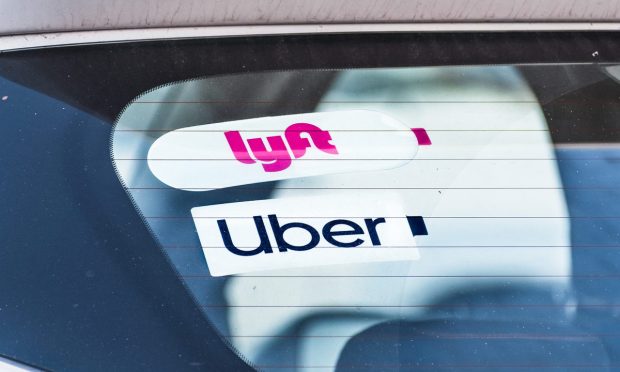Differing Roads for Uber and Lyft as Pandemic Fades in Rearview Mirror

A poet long ago wrote about two roads diverging in a yellow wood.
While you go Googling the poem and the poet, consider this: Robert Frost’s “The Road Not Taken” provides an apt illustration of the strategic paths chosen, and underway, at two competitors in the mobility business.
That would be Uber and Lyft, of course. Lyft reported earnings results late on Tuesday (Nov. 2), and Uber reports on Thursday. The numbers tell a story, of course.
At a 30,000-foot view, as the pandemic recedes into the rearview mirror — or, at least, vaccines are more widely embraced and both drivers and riders feel more comfortable about crowding together in vehicles — driver count and rider metrics have been on a heady upswing for Lyft, and should be for Uber.
As noted in this space, the comeback has not been complete — at not near pre-pandemic levels — but Lyft’s earnings showed that during the quarter ended Sept. 30, the number of active riders using Lyft increased 51% year over year to 18.9 million. At the same time, the number of active drivers surged by 45% year on year.
Read also: Ridesharing Is Recovering From the Pandemic, Lyft Says
The fact that supply/demand is becoming a bit more balanced is critical for Lyft. After all, the company has been establishing itself as a pure play on ride-hailing, and on the drivers’ side of the equation, the continued shift to the gig economy. Management noted on the conference call with analysts that new driver count was up 60% year on year. And demand for mobility options beyond the ride-hailing business, through bikes and scooters, was strong, driving $10 million of the sequential $99 million sequential increase in revenues. In examples of that demand, management noted on the conference call that Citi Bike rides made up roughly 40% of total ride volume in the region, tied to the strategy of broadening reach into its installed base.
With a bit of a nod to supply chain snarls and the tightness of the vehicle market, one analyst asked on the call if the overall macro backdrop benefits Lyft’s pure play model tied to the mobility market — in essence, eschewing car ownership for ride-hailing.
President and Co-founder John Zimmer stated, “We’ve spent multiple years on building out a fleet business. And primarily, we’ve been focused on doing that for drivers. And now we see opportunities to do that for riders. So we’ve launched Lyft Rentals with first-party vehicles as well as third-party vehicles.”
He continued, “So I think it just further supports having our broad and focused approach to transportation, where we can offer you a rideshare vehicle, we can offer you a rental and do that first party and provide the best experience, a bike and scooter, etc. And so yes, it’s an opportunity when there are shifts in the market, when there are limitations in the market on vehicles.”
As for the aforementioned divergence in strategy, Uber, of course, has been busy extending its platform, beyond ride-hailing, to embrace freight and delivery (including grocery and food). In the most recent quarter, the company said in its supplemental materials that cross-platform users drove 50% of gross bookings, up from 40% pre-COVID. And, said the company, in the United States, 22% of first time delivery orders originated from the rides app. In signs of Uber’s own emergence from the pandemic, gross bookings were up 28%, and where delivery revenue stood at $1.9 billion in the most recent quarter, up from $885 million in the year ago period, and increasing from the $1.7 billion seen in the March quarter.
Uber said the Delivery business generated gross bookings of $12.96 billion in the quarter, up 85% from a year ago and outperforming its core Mobility segment. The Mobility business contributed $8.6 billion in gross bookings, up 184%. The company also reported that its number of delivery merchants now exceeds 750,000.
See: Uber’s Q2 Rebound Driven By Costly Re-Staffing Made Prior To COVID-Delta Concern
We’ll get more insight into Uber’s cross-platform strategy on Thursday, and the road forward as the pandemic (hopefully) moves to the rearview mirror.
